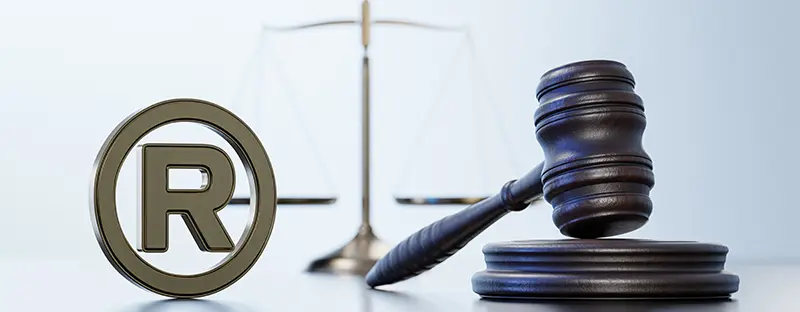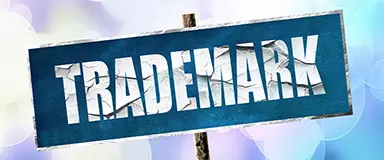Complete step-by-step guide to registering a trademark with the USPTO in 2025. Learn filing requirements, costs ($350 base fee), timelines (12-18 months), and maintenance requirements.
Why Startups Fail at Trademark Protection (And How to Avoid It)
Written by Adrian Torres ·

Startups have a tough road ahead of them in their quest to grow the business to the point where they are internationally known. But beyond the traditional woes of not having enough budgeting or initial momentum to reach the required throughput, startups might also fail because their key business proposition isn’t that unique when compared against similar companies in their niche.
The same concept can apply to trademarks, with startups unable to protect their uniqueness against companies that maliciously or inadvertently infringe on it. IP issues cause at least 7% of startups to fail, and while that might not sound like much, it results in thousands of failed ventures every year. Here are some of the most common reasons this can happen and how it can be avoided.
Mistake 1: Failing to Consider Trademarks as Important
It’s completely understandable to want to give 110% to growing the business and making sure that the core value proposition gets seen by as many potential customers as possible. But oftentimes, this sacrifices other important aspects of running a business, including trademark and copyright protection.
And while market entry costs, product development, and customer acquisition are going to be vital for your business to actually turn a profit, all that profit can go away if a competitor can steal your idea and present it as their own with minor changes. Even worse, if you fail to properly search for trademarks from the very start, you might inadvertently infringe upon a larger company’s mark, which naturally takes precedence and can erase all the months that you spent developing logos, names, and slogans.
At the end of the day, trademarks ensure that the core value proposition of your business stands out against others. It makes your company unique, and that should be protected.
Mistake 2: Not Doing a Proper Trademark Check
When a small company first decides on a trademark they want to use, the leaders might be inclined to research other existing companies in their niche and go off those ideas. Of course, pivoting so you get something unique is a given. But if you pivot too much, you might end up with a trademark that looks similar to what someone else in a similar industry is doing.
That’s why a proper, thorough trademark search is vital. It ensures that you’ve covered all your bases and that your mark is truly unique on the market, at least in the industry you’re in. If you don’t conduct such a search, an established brand can swoop in with a cease-and-desist order, which can lead to a legal battle that makes the startup itself a non-starter.
Luckily, this is where proactive measures and professional services come into play. A professional trademark protection and registration service can scour the entire world for trademarks that are similar to your planned one. This ensures you have all the information you need to make informed decisions on how to proceed with trademark applications or whether you need to go back to the drawing board to look for a new, suitable mark. Most often, the cost of performing a search is much lower than being served a cease-and-desist letter and having to fight it or change your strategy after it’s already been implemented.
Mistake 3: Neglecting Global Trademarks
Small businesses often need to keep operations modest due to necessity. But even if they don’t have aspirations to go global, marketing to the rest of the world has become practically effortless in the modern digital age, so long as you get the business up and running.
This creates a natural clash with other companies doing the same, and opens startups to being competitors with companies around the globe. This also drives the need to protect the trademark globally. If you don’t, a copycat can spring up in a foreign market, sucking up the potential profit of an entire nation’s worth of audience. Even though failing to secure the trademark first might lead to a complete rebranding in only a few select countries, it can still take significant effort (and funding) to achieve and remain consistent with the original mark.
Mistake 4: Improper Documentation and Categorization
Trademarks are classified by the industry and the specific purpose of the product or service they protect. This means that several similar trademarks can exist if they are in disparate industries. Conversely, filing a trademark in multiple categories can make it more difficult to defend against companies that are focusing on a single one.
Meanwhile, keeping the documentation for the trademark’s use or intent to do so can be vital for a startup that’s yet to go to market. A startup might face challenges in court if it can’t produce documentation that supports its intended use case of the trademark it filed, which can lead to a rejection of the entire trademark.
Making sure to go over the proper documentation requirements for each trademark type and category, or better yet, having a professional trademark protection service to do so, can alleviate these concerns and ensure proper log-keeping that can be vital for thorough defenses.
Mistake 5: Over-Reliance on Counsel
Even if you have followed the advice of a trademark lawyer or a professional service to register and defend the trademark, those services are only as good as you understand them. While a startup owner isn’t going to be expected to know the ins and outs of trademark law, a cursory understanding of the underlying mechanisms can help. It will ensure that owners can properly communicate their needs, thus getting the proper services at the right price, which allows them to budget adequately.


